This past April, my friend Paul Wray, of Quartzite/Whitehorse, and I visited the Alice Mine, Riverside County, just north of Blythe, CA. Paul and his wife Liz own the Yukon Rock shop and spend half of the year there but winter in Quartzite, AZ, where they attend the Quartzite shows. If you are ever in the Yukon, you must make time to visit the Yukon Rock Shop, just south of Whitehorse. They have lots of great rocks, minerals and other local items.
Paul has been to the Alice mine before and knew the way well. The mine is a simple one consisting of two adits into the side of the mountain and one stope between the adits. There is also a winze where it appears the old boys did some deeper mining. The stope breaks out to surface above the top adit so ventilation is pretty good.
During our visit, we entered the lower adit and climbed up through the stope looking for interesting minerals. It was an arduous, dangerous climb that I don't recommend for anybody, unless you are fit and well equipped.
As it turns out, we didn't actually find much of interest inside the mine until we reached the top adit. Here are some photo's of the workings and mineralization for your interest. Both Paul and I took all of the photographs.
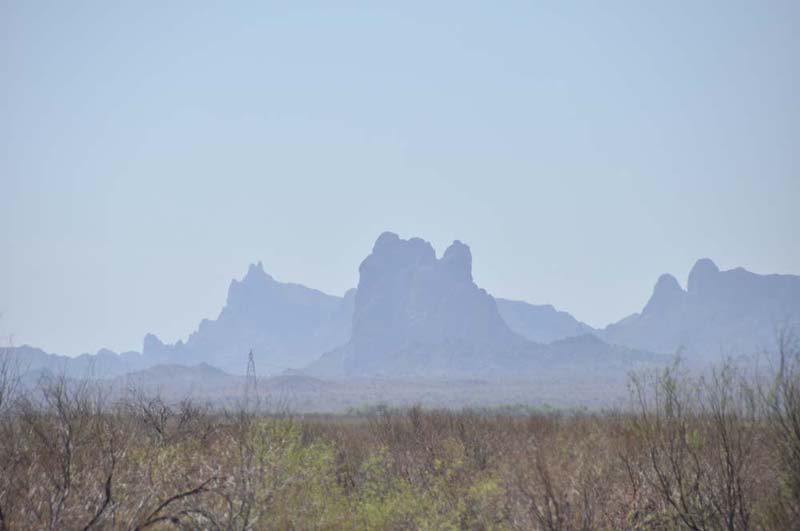
West of Phoenix
I always enjoy the drive from Phoenix, west to Quartzite. Lots of cool mountains and Sonora Desert!
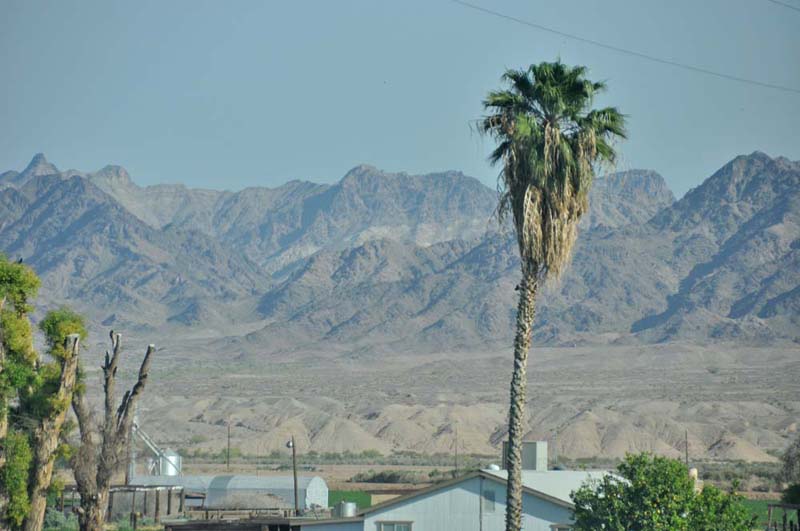
Heading North from Blythe
From Blythe, we headed north, skirting the east side of the Riverside Mountains on our way to the Alice Mine. The Alice Mine is on the North side of the Riverside Mountains.

Tough Road
The road into the mine is a rough one! We were able to get close to the mine but the last few hundred feet had a fairly deep washout that we were just not confident to try to get across. We walked the rest of the way in.

The Alice Mine
The Alice Mine was a very small copper-gold mine that operated during the (probably)late 30's or early 40's. According to mindat.org, 20,000 tons of fairly low grade ore were mined. I imagine it could have been for the war effort but could stand corrected.See mindat.org for more info and references. In this picture, you should be able to see the lower adit and the dump that is below the upper adit. That's Paul in the foreground.
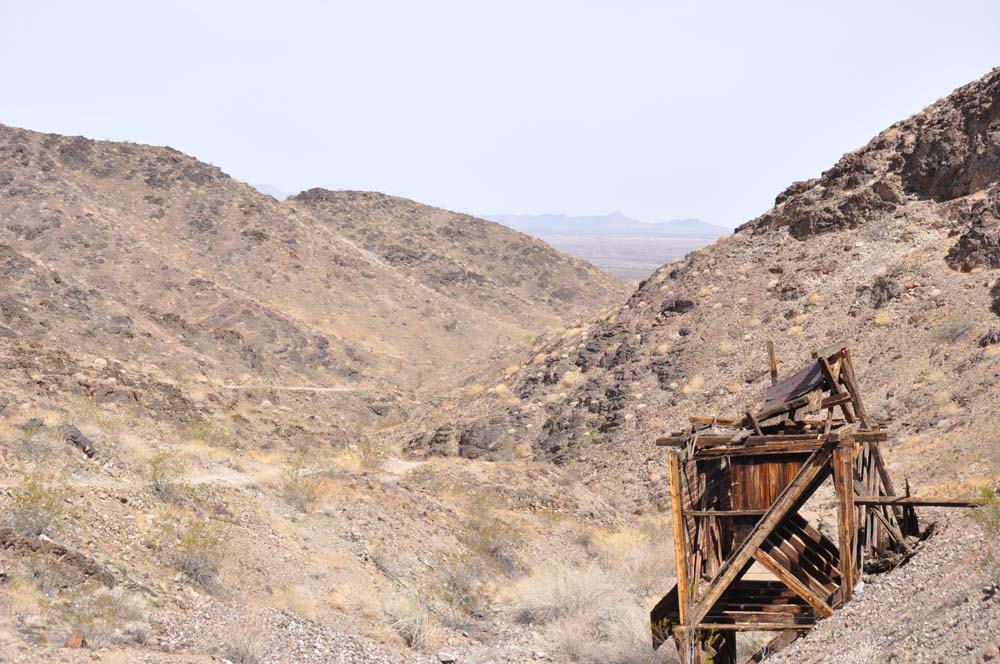
Ore Bin and Road In
Here is a shot of the Alice Mine Road and the remnants of the ore bin that was used to load the trucks that took the ore to be processed.
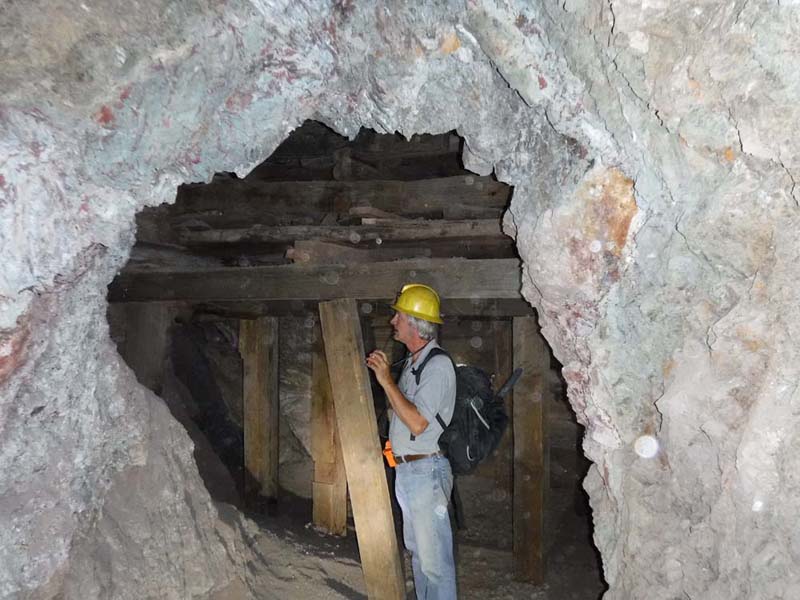
Lower Adit
A view of yours truly checking out the rocks in the lower adit just before we started our acsent.

Paul Checking Things
Paul Wray is a professional miner and mine supervisor. He knows his way around underground workings!

A Surprise Geocache!
Hard to believe that geocachers go all the way in to this old underground mine but apparently some do! This geocache involved a dummy sitting in a chair and a place where people leave their sunglasses or take sunglasses or something! I'm not a geocache person so don't know.

Ore Chute
Here is an ore chute that was built to enable ore from the stope above to be loaded by gravity into ore rail cars in the lower adit. It is in pretty good shape after all these years!

Ladder
This is the way that the miners (and us!) climbed up into the stope.
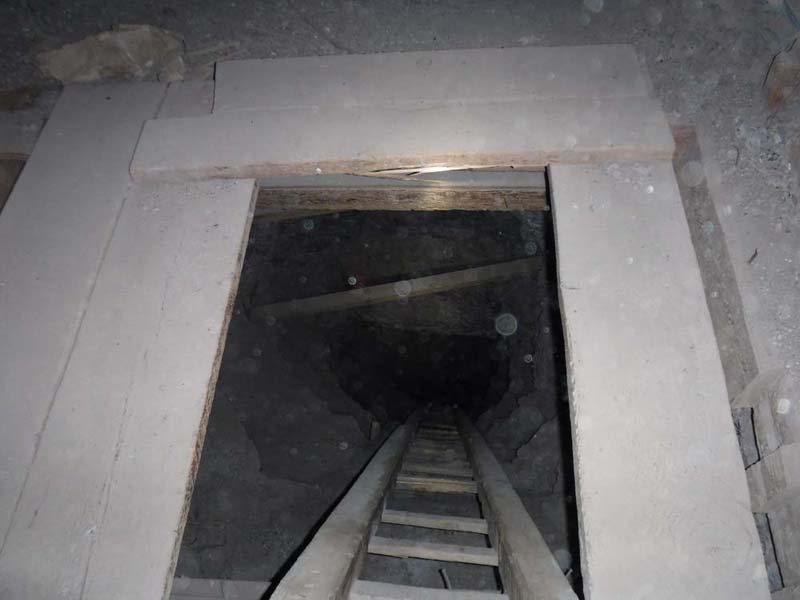
Staging
When you climb up a raise or stope, there is a "staging" at different levels that you climb onto for stability and a rest, if needed.
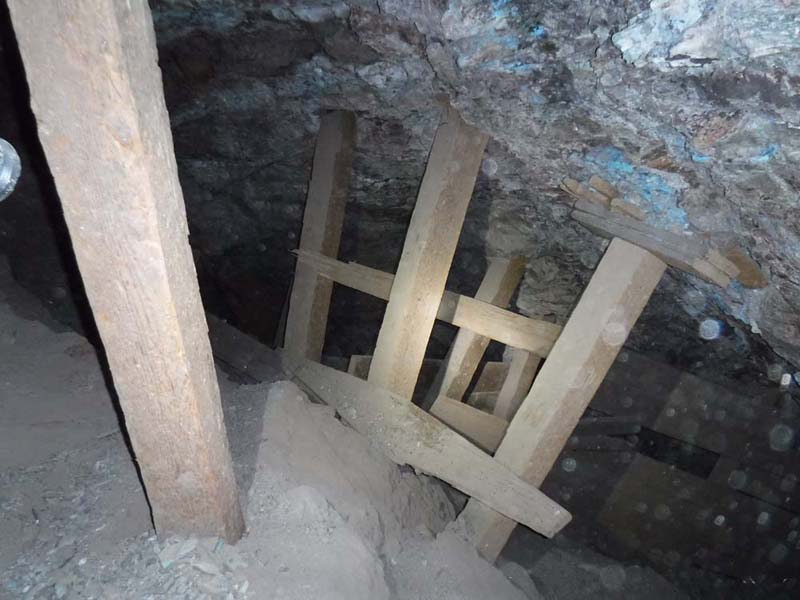
Inside the Stope
The stope is the place in any mine where the ore is actually blasted out of the vein and moved down to the loading chutes. The stope is the workings on the vein itself. So by definition, the miners blasted out all of the good stuff from the vein in this stope and didn't leave much behind for us! Of course, in this kind of stoping, they used timbers to support areas of the rock that they felt were not as stable as they would have liked.
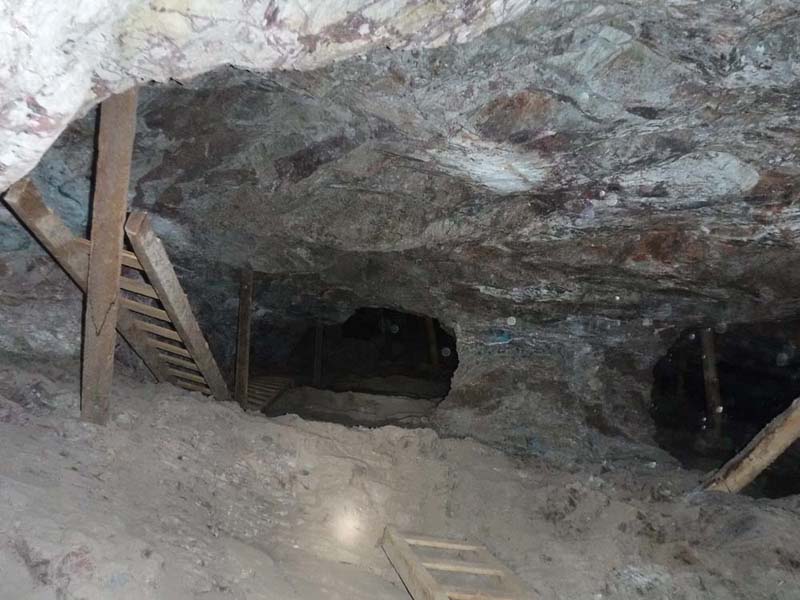
Stope Pillar
Here is another view of the Alice Mine stope. Miners try to leave pillars when they mine as a rockmass and hanging wall stabilization technique. Here is a view of a pillar.
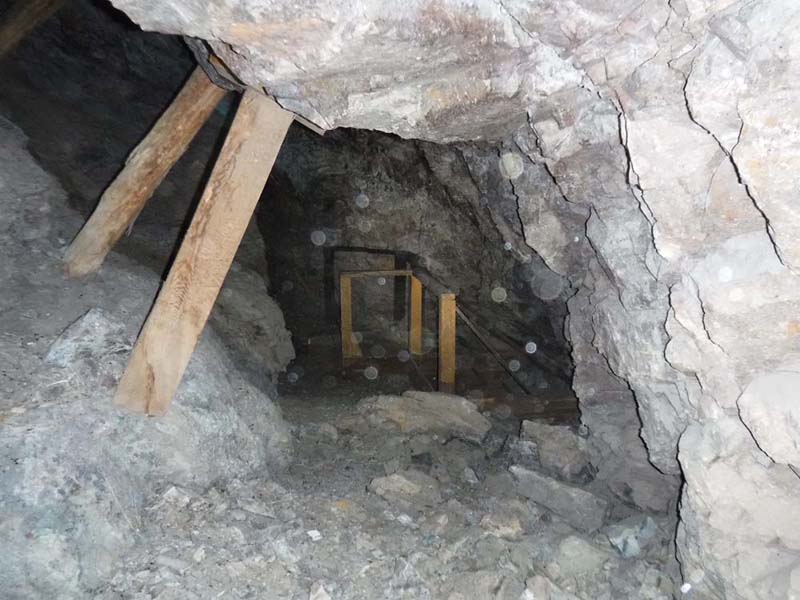
Mining Sublevel
This is a sub level between the two adit levels at the Alice Mine. It would have been used for exploration, equipment and supplies storage, etc.
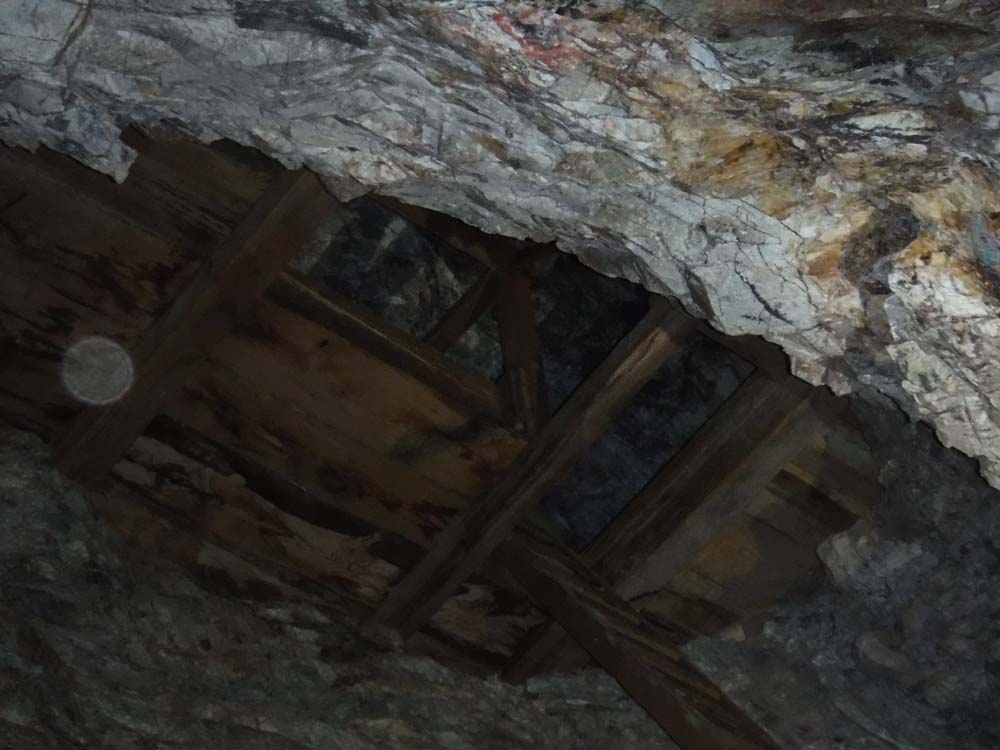
Upper Level Staging
This is a picture of the upper level staging from below in the stope. We climbed up there to exit the stope.
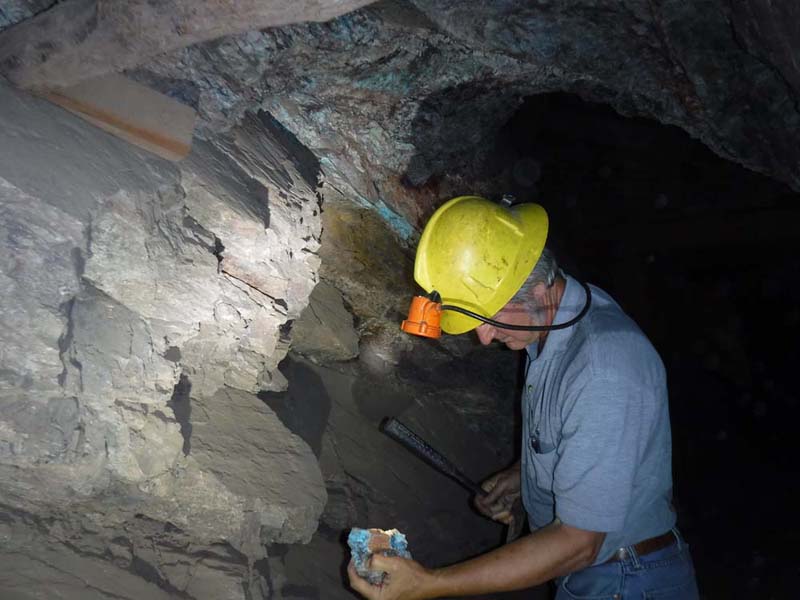
Mineral Specimens
In the upper adit drift, where it intersected the vein, I found some interesting quartz crystals on blue chrysocolla. In my miners cap lamp, it sure looked sparkly! Not great specimens but I thought it would be a good idea to take them home, clean them up and see what they really are.
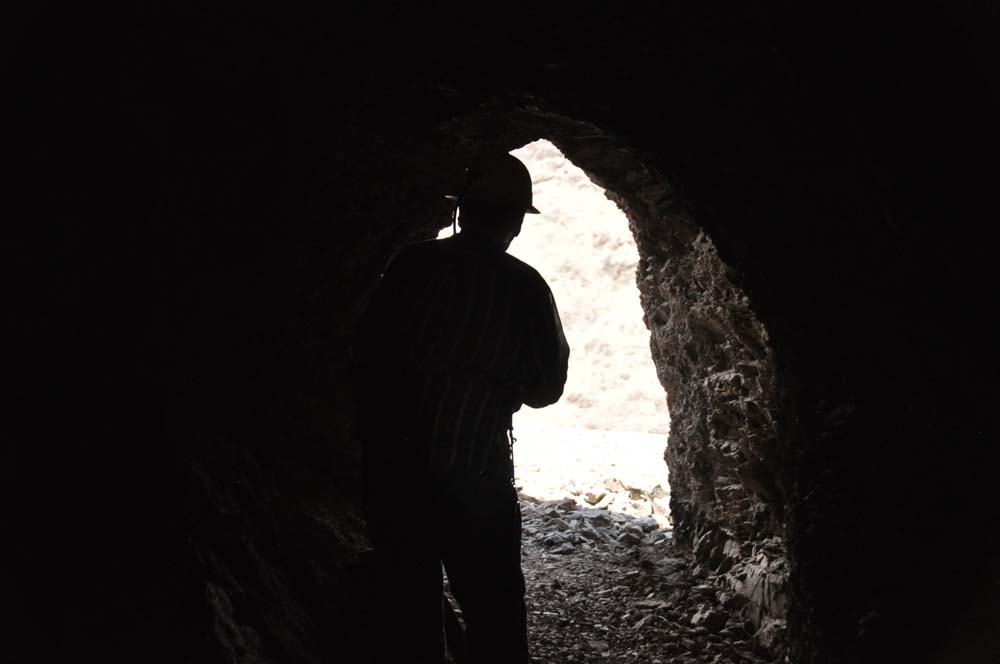
Upper Adit Exit
Here you can see Paul headed out the portal of the upper adit to daylight.
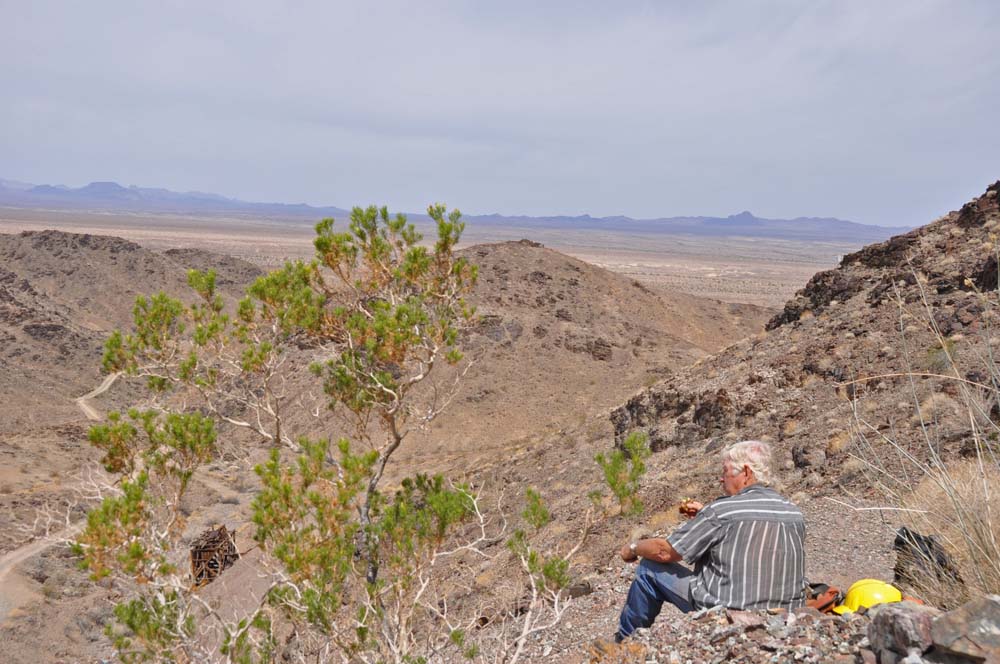
Lunch time!
It is a pretty nice view across the desert up there at the upper adit portal. Great place for lunch!
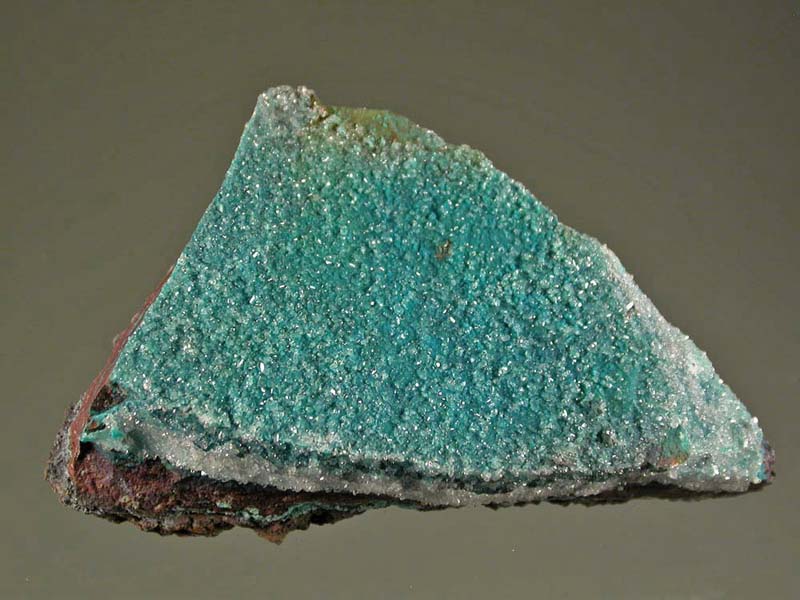
Chrysocolla, Quartz
This sis a specimen, typical of the quartz-coated chrysocolla that I recovered from that little seam in the upper adit. The chrysocolla is actually composed of largely, tiny needle-like crystals that are probably pseudomorphs of chrysocolla after malachite or some other secondary copper mineral.
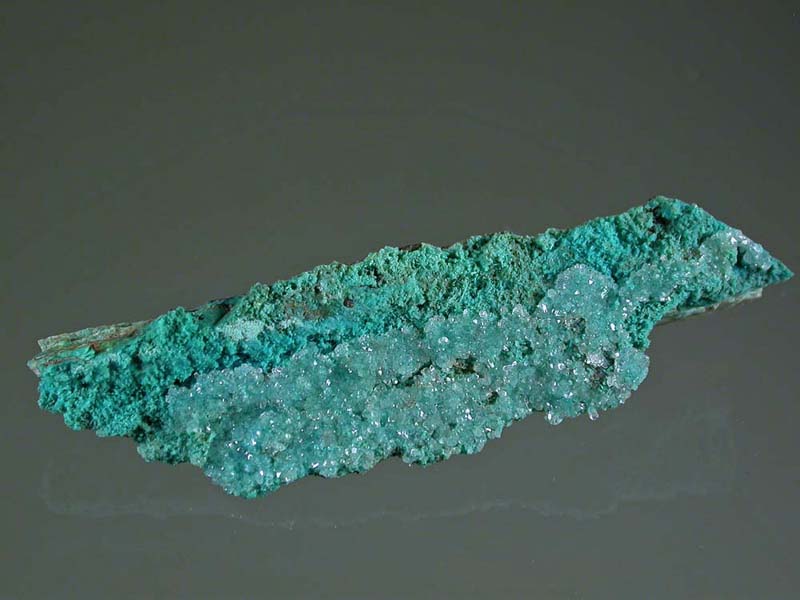
Chrysocolla, Quartz
Here is another rich chrysocolla and quartz specimen.

Gypsum, Chrysocolla, Quartz
This one was a little different. It had elongated, white gypsum crystals associated with the chrysocolla and quartz crystals. Field of view is about 4.0cm.

Chrysocolla ps Malachite?
These are the needle-like pseudomorphs I was mentioning earlier. Sharp!

Chrysocolla ps Malachite?
A little closer view. The field of view is only a couple of mm.
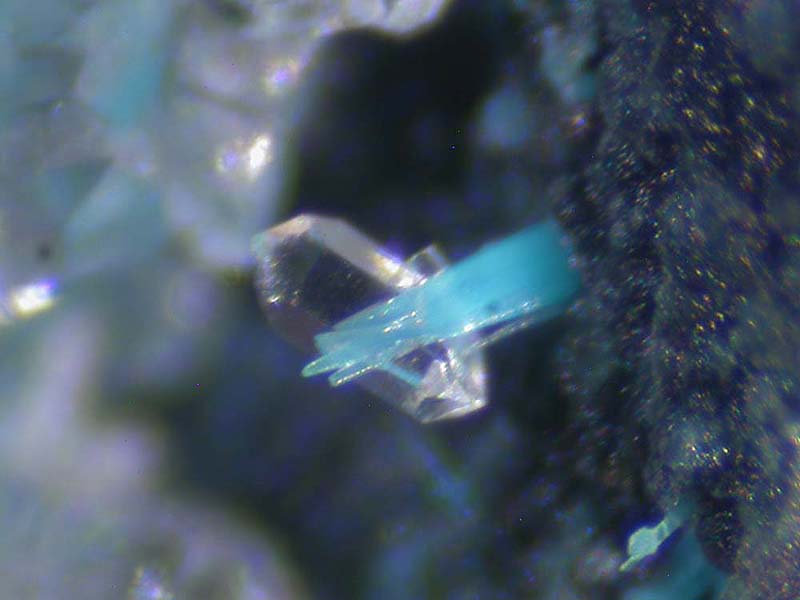
Quartz, Chrysocolla ps. Malachite
This image shows a gemmy quartz crystal on a blue crystal. This must say something about the paragenesis?